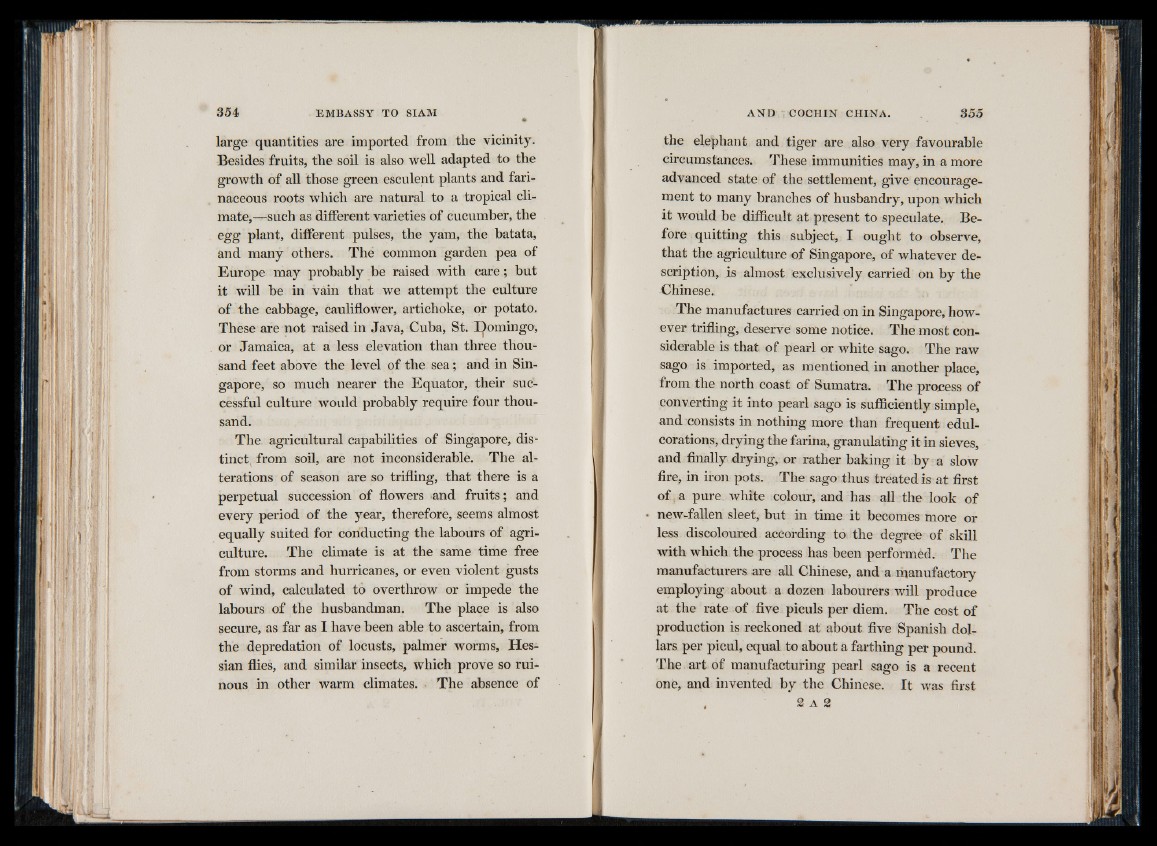
•
large quantities are imported from the vicinity.
Besides fruits, the soil is also well adapted to the
growth of all those green esculent plants and farinaceous
roots which are natural to a tropical climate,—
such as different varieties of cucumber, the
egg plant, different pulses, the yam, the batata,
and many others. The common garden pea of
Europe may probably be raised with care; but
it will be in vain that we attempt the culture
of the cabbage, cauliflower, artichoke, or potato.
These are not raised in Java, Cuba, St. Domingo,
or Jamaica, at a less elevation than three thousand
feet above the level of the sea; and in Singapore,
so much nearer the Equator, their successful
culture woidd probably require four thousand.
The agricultural capabilities of Singapore, dis-
tinct from soil, are not inconsiderable. The alterations
of season are so trifling, that there is a
perpetual succession of flowers and fruits; and
every period of the year, therefore, seems almost
equally suited for conducting the labours of agriculture.
The climate is at the same time free
from storms and hurricanes, or even violent gusts
of wind, calculated to overthrow or impede the
labours of the husbandman. The place is also
secure, as far as I have been able to ascertain, from
the depredation of locusts, palmer worms, Hessian
flies, and similar insects, which prove so ruinous
in other warm climates. The absence of
the elephant and tiger are also very favourable
circumstances. These immunities may, in a more
advanced state of the settlement, give encouragement
to many branches of husbandry, upon which
it would be difficult at present to speculate. Before
quitting this subject, I ought to observe,
that the agriculture of Singapore, of whatever description,
is almost exclusively carried on by the
Chinese.
The manufactures carried on in Singapore, however
trifling, deserve some notice. The most considerable
is that of pearl or white sago. The raw
sago is imported, as mentioned in another place,
from the north coast of Sumatra. The process of
converting it into pearl sago is sufficiently simple,
and consists in nothing more than frequent edulcorations,
drying the farina, granulating it in sieves,
and finally drying, or rather baking it by a slow
fire, in iron pots. The sago thus treated is at first
of a pure white colour, and has all the look of
new-fallen sleet, but in time it becomes more or
less discoloured according to the degree of skill
with which the process has been performèd. The
manufacturers are all Chinese, and a manufactory
employing about a dozen labourers will produce
at the rate of five piculs per diem. The cost of
production is reckoned at about five Spanish dollars
per picul, equal to about a farthing per pound.
The art of manufacturing pearl sago is a recent
one, and invented by the Chinese. I t was first
2 A 2